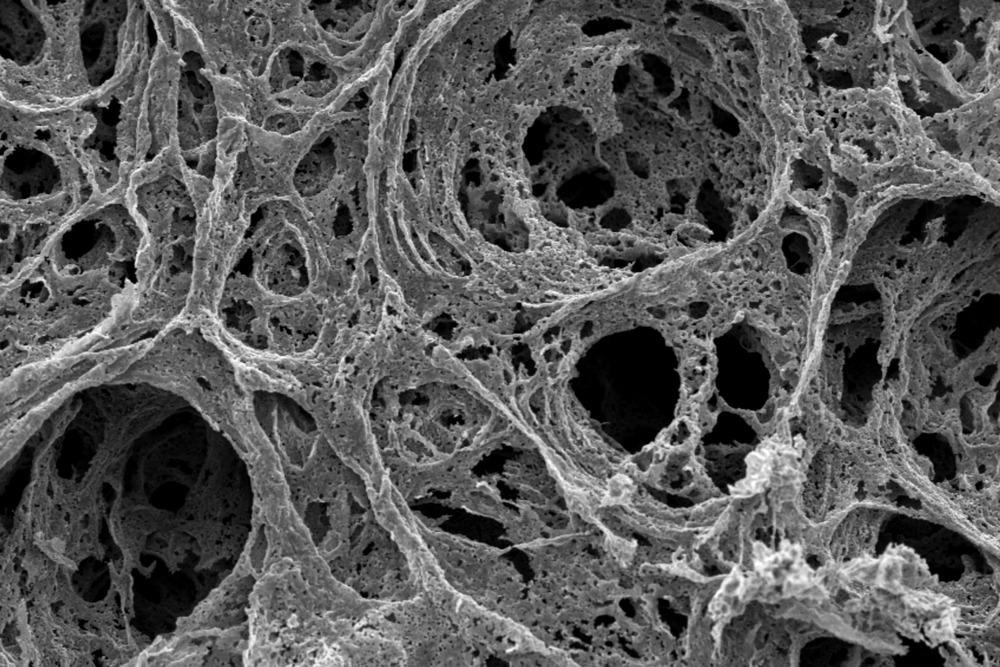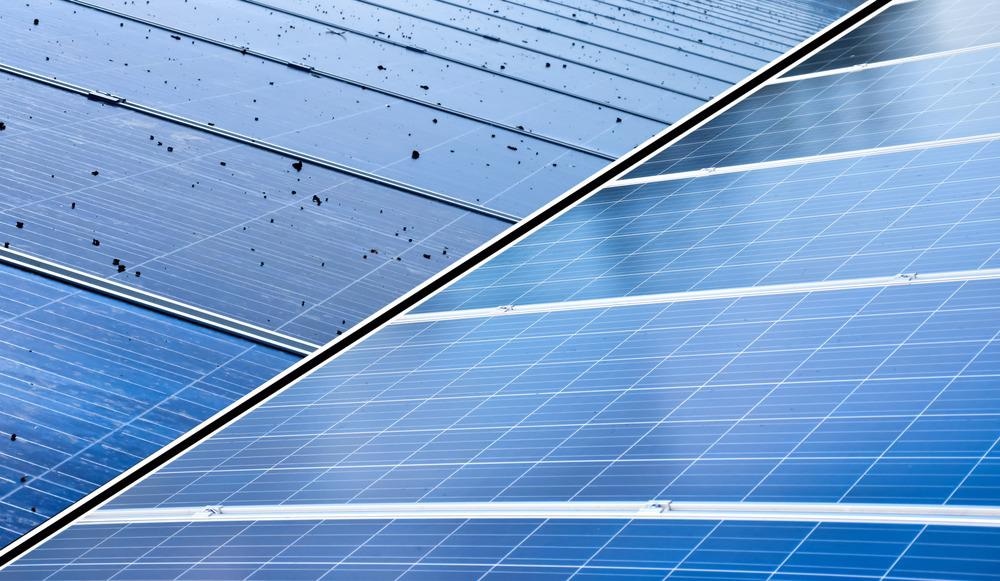Nanoporous metals possess properties of high surface area, high electrical conductivity and mechanical characteristics. They have found promising applications in various energy generation technologies and storage devices. In this article, an overview of their use is provided.

Image Credit: LuYago/Shutterstock.com
There are a variety of porous materials that include metals, carbon, metal oxides, inorganic-organic hybrids, and polymers. These porous materials can be generally categorized depending on their pore size: microporous (pore size < 2 nm), mesoporous (2 nm < pore size < 50 nm) and macroporous (pore size > 50 nm).
Nanoporous materials are another category of porous materials that were developed after the establishment of nanotechnology.
Nanoporous metals are a subset of nanoporous materials that have received much attention due to their highly desirable material properties. The porous structure of the nanoporous metal further extends the properties of the parent metal.
Nanoporous Metal Fabrication
There are various strategies employed for the fabrication of nanoporous metals. Template synthesis, surfactant mediated synthesis and dealloying are a few methods used for its fabrication.
Template synthesis method is further categorized into hard, soft and multiple template methods depending on the templates used.
However, this approach is limited due to a lack of control over pore size and morphology.
Since the shape and size distribution of the nanoporous metals are highly desirable, the surfactant-mediated fabrication method has been explored. Dealloying is another approach by which selective dissolution of alloy material leads to nanoporous metals.
Nanoporous Metals for Photovoltaics
In a study by Yang et al. (2020) nanoporous gold (Au) was studied as contact electrode for perovskite solar cells as a replacement to thermally evaporated Au electrodes. The solar cell reported a power conversion efficiency of 19 %; moreover, the electrode was found recyclable many times. The researcher further reports the use of Au nanoporous electrodes in flexible solar cells to obtain a power conversion efficiency of 17.3 % with bending durability of ~ 98.5 % even after 1000 cycles of bending tests.
Yet another work by Xu et al. (2013) reported the use of nanoporous silver thin film as a transparent anode for organic solar cells. The fabrication process was reported to be low cost, have a large processing area and room temperature fabrication.
A nanoporous MoOx – Ag/MoOx multilayered structure was fabricated, which reported a sheet resistance of ~ 9 W/sq and ~ 70 % transparency. The work reports power conversion efficiency obtained from solar cells based on the nanoporous anode, similar to solar cells based on the Indium Tin Oxide (ITO) anode.

Image Credit: Sophon Nawit/Shutterstock.com
Application of Nanoporous Metals in Supercapacitors
Nanoporous metals with high electrical conductivity and large surface area for increased ion adsorption are a promising material for supercapacitors.
In work by Wang et al. (2013), highly flexible nanoporous silver (Ag) substrates were developed for thin-film electrodes in supercapacitors. The nanoporous Ag@Co(OH)2 thin films exhibited high volumetric capacitance of 929 F cm-3 at a current density of 2 A cm-3. The electrode maintained the original nanoporous structure and flexibility even after 100 bending cycles.
Moreover, the nanoporous Ag@Co(OH)2 based supercapacitor reported a high energy density of 20.07 mWh cm-3 at a power density of 0.85 W cm-3. The work thus reported the application of highly flexible nanoporous Ag as high-performance electrode for the portable and wearable supercapacitors.
In another work reported by Ge et al., (2020), nanoporous nickel (Ni) decorated with Ni(OH)2 (Ni(OH)2@NPN) nanosheets was studied as cost effective electrode for supercapacitors.
Ultrahigh specific capacitance of 3790 F g-1 at 2 A g-1, excellent rate capability and high cyclic stability of 92 % capacitance retention at a current density of 20 A g-1 for 5000 cycles, was reported for Ni(OH)2@NPN based supercapacitors.
The high performance was claimed due to the structural features of Ni(OH)2@NPN providing good electrical conductivity that helped in rapid electron transfer and short pathways that helped in faster diffusion of electrolyte ions.
Batteries Based on Nanoporous Metals
In work published in the journal Small, a three-dimensional nanoporous zinc-copper alloy was fabricated by thermal annealing, in-situ electrochemical reduction and dealloying process. This nanoporous metal alloy's structural design benefited from an interconnected pore network filled with electrolyte, short ion diffusion length, large surface area, and high electron conductivity.
The material exhibited superior cycle stability, high voltage region (2.5 V), high energy density (3.70 Wh cm-2) and high rate capability, promising for next-generation electronic devices.
Yang et al (2019). studied nanoporous germanium (Ge) as an anode material for stable potassium ion batteries. The nanoporous structure of Ge was fabricated through chemical-dealloying method.
Stable capacity of ~ 120 mAh g-1 over 400 cycles was reported. Furthermore, the study suggests nanoporous Ge as a potential anode for potassium (K) ion batteries; however, structural tailoring of the anode is required to solve the kinetics problem of large K ions.
Hydrogen storage in nanoporous materials – investigations into hydrogen densification
Video Credit: Imperial College London/YouTube.com
For Fuel Cells
In a study published in the Journal of Power Sources, nanoporous palladium (Pd) thin film was studied in micro-solid fuel cells (m-SOFCs) having nanoscale proton-conducting Y-BaZrO3 (BZY) electrolyte.
The m-SOFCs operated with ethanol vapor and nanoporous Pd as an anode. This Pd-anode/BYZ-electrolyte/Pt-cathode cell showed a peak power densities of 72.4 mW cm-2 using hydrogen and 15.3 mW cm-2 using ethanol at 400 °C.
This work demonstrated the approach by which ethanol fuel could be directly utilized for m-SOFCs, which could be a promising power source for portable electronic devices.
Future Prospects of Nanoporous Metals
Due to the continuous ligament channel structure and related properties, nanoporous metals have shown promising applications in catalysis, sensing, actuation, energy conversion and energy storage devices.
Despite these great advantages, various challenges exist, such as fabrication and controlled structuring. More studies have to be conducted to develop approaches for the fabrication of nanoporous non-noble metals like Cu, Fe, Ni, and others. A revolutionary breakthrough in these materials is expected in the near future.
Continue reading: Nanoporous Membranes Can Help Blue Energy Become a Reality: Here's How.
References and Further Reading:
Zhang, J. and Li, C.M. (2012) Nanoporous metals: fabrication strategies and advanced electrochemical applications in catalysis, sensing and energy systems. Chemical Society Reviews, 41(21), pp.7016-7031. Available at: https://doi.org/10.1039/C2CS35210A.
Yang, F., Liu, J., Lu, Z., Dai, P., Nakamura, T., Wang, S., Chen, L., Wakamiya, A. and Matsuda, K. (2020) Recycled utilization of a nanoporous Au electrode for reduced fabrication cost of perovskite solar cells. Advanced Science, 7(6), p.1902474. Available at: https://doi.org/10.1002/advs.201902474.
Xu, W.F., Chin, C.C., Hung, D.W. and Wei, P.K. (2013) Transparent electrode for organic solar cells using multilayer structures with nanoporous silver film. Solar energy materials and solar cells, 118, pp.81-89. Available at: https://doi.org/10.1016/j.solmat.2013.07.047.
Wang, C., Zhu, S., Liang, Y., Cui, Z., Wu, S., Qin, C., Luo, S. and Inoue, A. (2021) Highly flexible and conductive nanoporous Ag as good substrate for flexible hybrid supercapacitors. Journal of Alloys and Compounds, 854, p.157095. Available at: https://doi.org/10.1016/j.jallcom.2020.157095.
Ge, W., Encinas, A., Ruiz, M.F., Araujo, E. and Song, S. (2020) Facile fabrication of nanoporous nickel with rational pore structure decorated with ultrathin Ni (OH)2 nanosheets as advanced supercapacitor electrodes. Scripta Materialia, 178, pp.155-160. Available at: https://doi.org/10.1016/j.scriptamat.2019.11.023.
Liu, B., Wang, S., Wang, Z., Lei, H., Chen, Z. and Mai, W. (2020) Novel 3D nanoporous Zn–Cu alloy as long‐life anode toward high‐voltage double electrolyte aqueous zinc‐ion batteries. Small, 16(22), p.2001323. Available at: https://doi.org/10.1002/smll.202001323.
Yang, Q., Wang, Z., Xi, W. and He, G. (2019) Tailoring nanoporous structures of Ge anodes for stable potassium-ion batteries. Electrochemistry Communications, 101, pp.68-72. Available at: https://doi.org/10.1016/j.elecom.2019.02.016.
Li, Y., Wong, L.M., Xie, H., Wang, S. and Su, P.C. (2017) Nanoporous palladium anode for direct ethanol solid oxide fuel cells with nanoscale proton-conducting ceramic electrolyte. Journal of Power Sources, 340, pp.98-103. Available at: https://doi.org/10.1016/j.jpowsour.2016.11.064.
Disclaimer: The views expressed here are those of the author expressed in their private capacity and do not necessarily represent the views of AZoM.com Limited T/A AZoNetwork the owner and operator of this website. This disclaimer forms part of the Terms and conditions of use of this website.